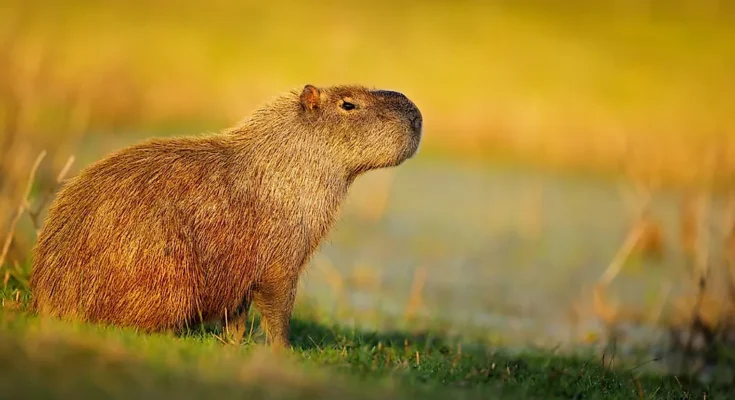10. Its Name Roughly Means One Who Eats Slender Leaves In The Tupi Language.
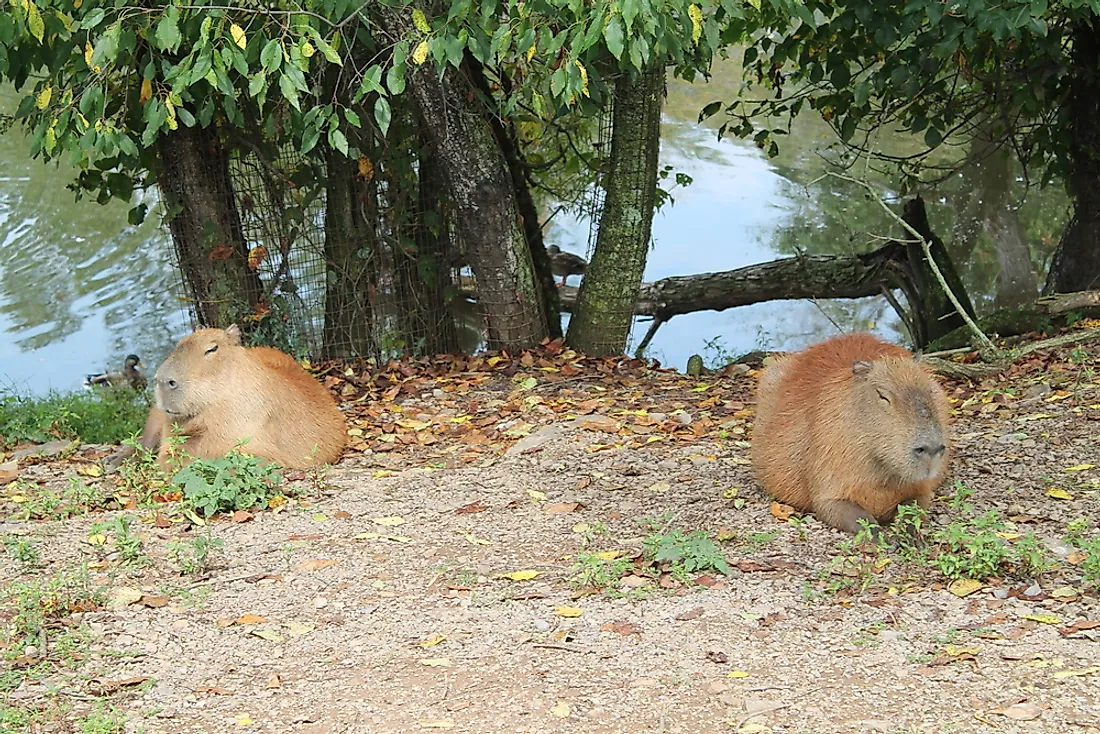
The name “capybara” comes from a Tupi word called “ka’apiûara.” The word has three parts. The parts are “kaá” meaning “leaf,” “píi” referring to “slender,” and “ú” denoting “eat.” The three portions of the word “ka’apiûara” end in the suffix “ara” which is an agent suffix. Therefore the word capybara means the “one who eats slender leaves” or “grass-eater.” The name outlines its herbivorous nature. The diet of a capybara majorly constitutes aquatic plants, grass, and fruit and tree bark. They are unique animals who are very selective in their feeding habits. They may eat one species of plants in the dry season and abandon it during the wet season when there’s plenty of grass.
9. Like Many Other Rodents, Capybaras Mostly Hop!
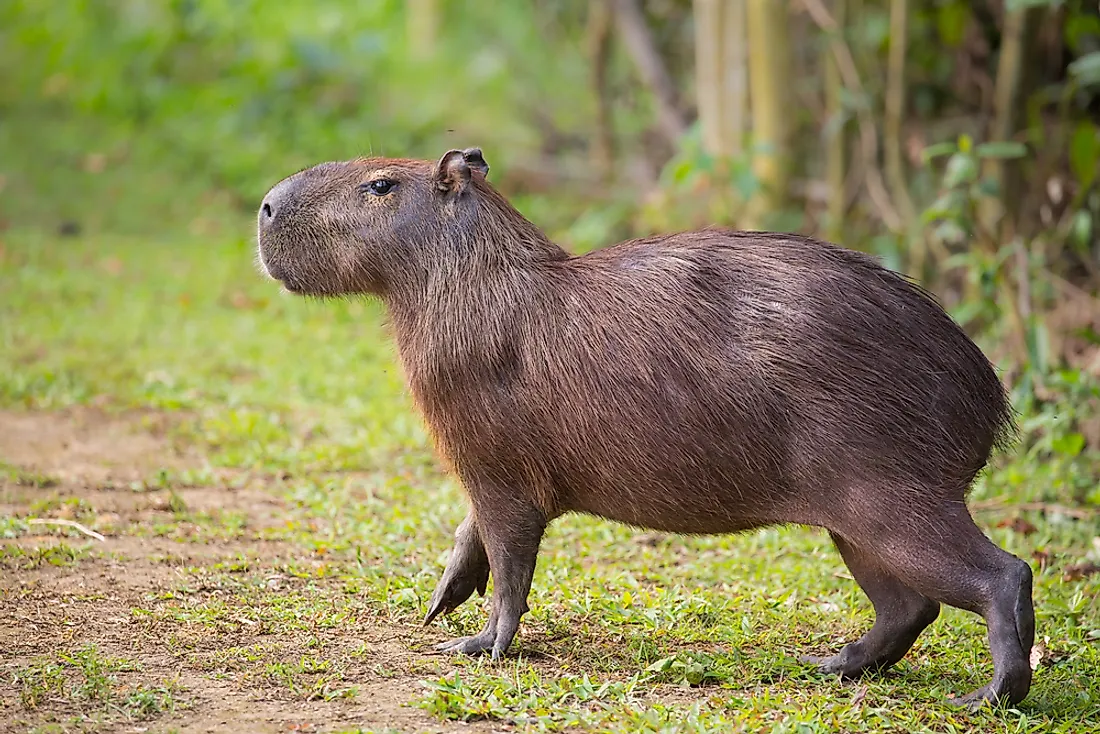
Capybaras hop because their forelegs are slightly shorter than the hind legs. Consequently, they will always balance on their hind legs. Their front feet have four toes while the rear ones have three toes only.
8. Capybaras Are Extremely Social, And Live In Groups Of Between 10-20.
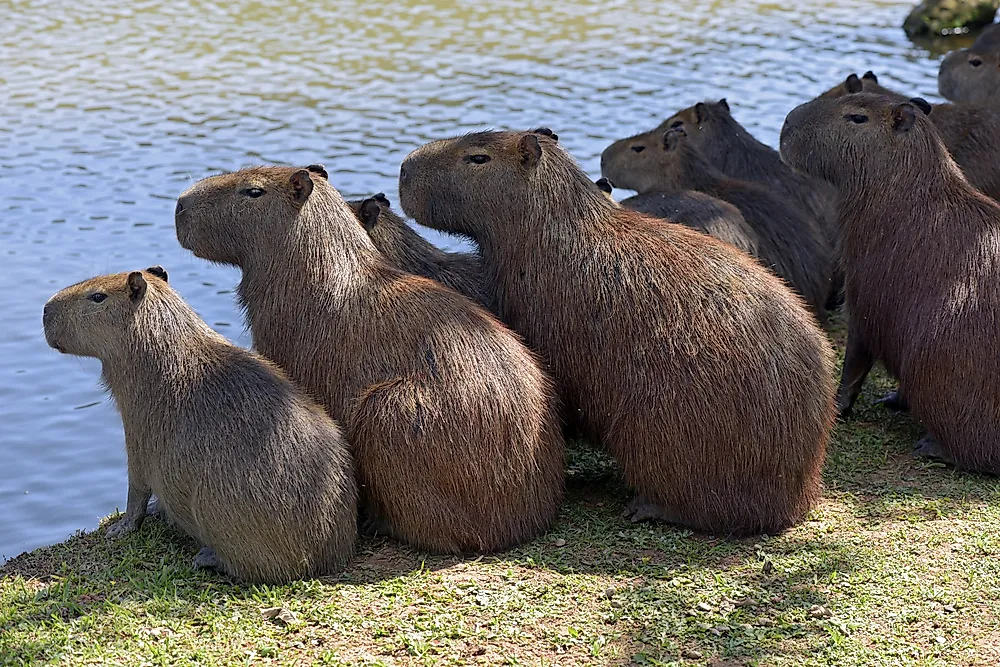
Although sometimes they live solitarily, the Capybaras mostly live in groups of 10-20. The groups consist of males, females, and juveniles. In each group, one will find 4-7 adult females, 2-4 adult males, and some juveniles. During the dry seasons, the Capybaras gather around sources of water in groups of 50 or 100. The males take the leadership role in the groups. Consequently, they establish dominance, group consensus, and social bonds. Furthermore, they offer protection to the groups by watching over them and warning them in case of danger. The males bark like dogs whenever they sense threat nearby.
7. Capybaras Are Very Capable Swimmers.
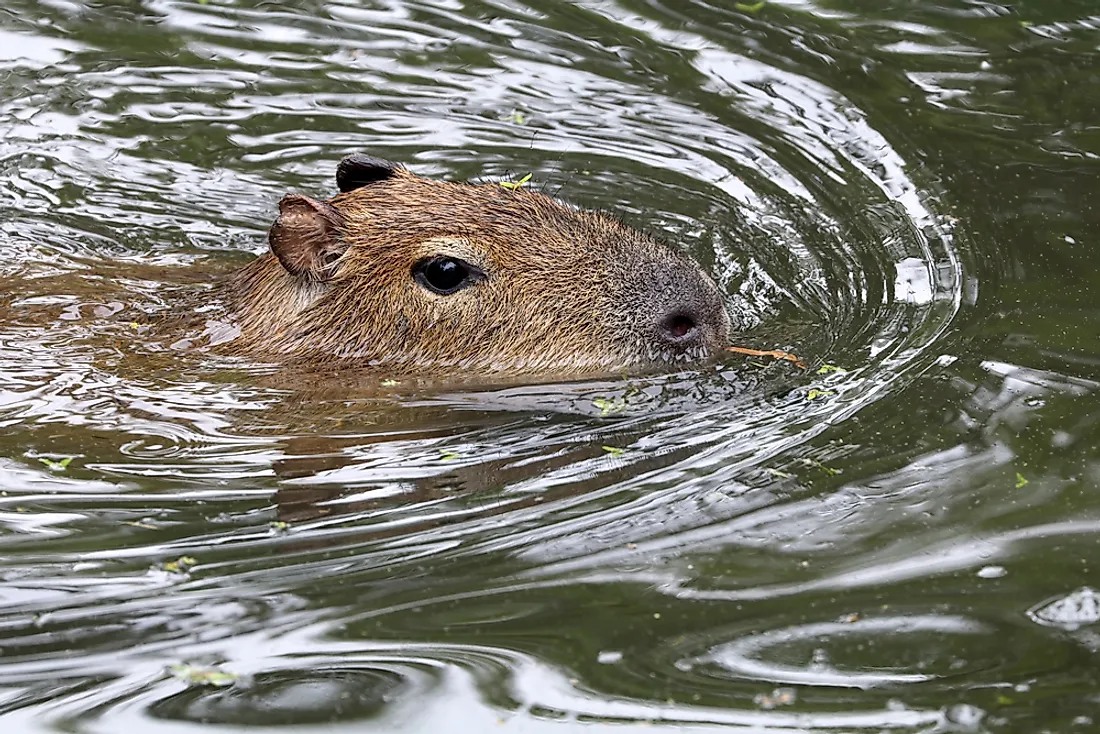
Just like they are fast runners on land, the Capybaras are also excellent swimmers. They can stay submerged in water for about five minutes. As a result, the Capybaras can easily evade predators by hiding under water. They can also sleep in water while keeping their noses above the water. For the days when the temperatures are very high, the Capybaras will keep wallowing in the waters to stay cool. They wait until late in the afternoon or the evenings when the temperatures decrease. Then they can go grazing.
6. Other Animals Love To Use The Capybara As A Chair.
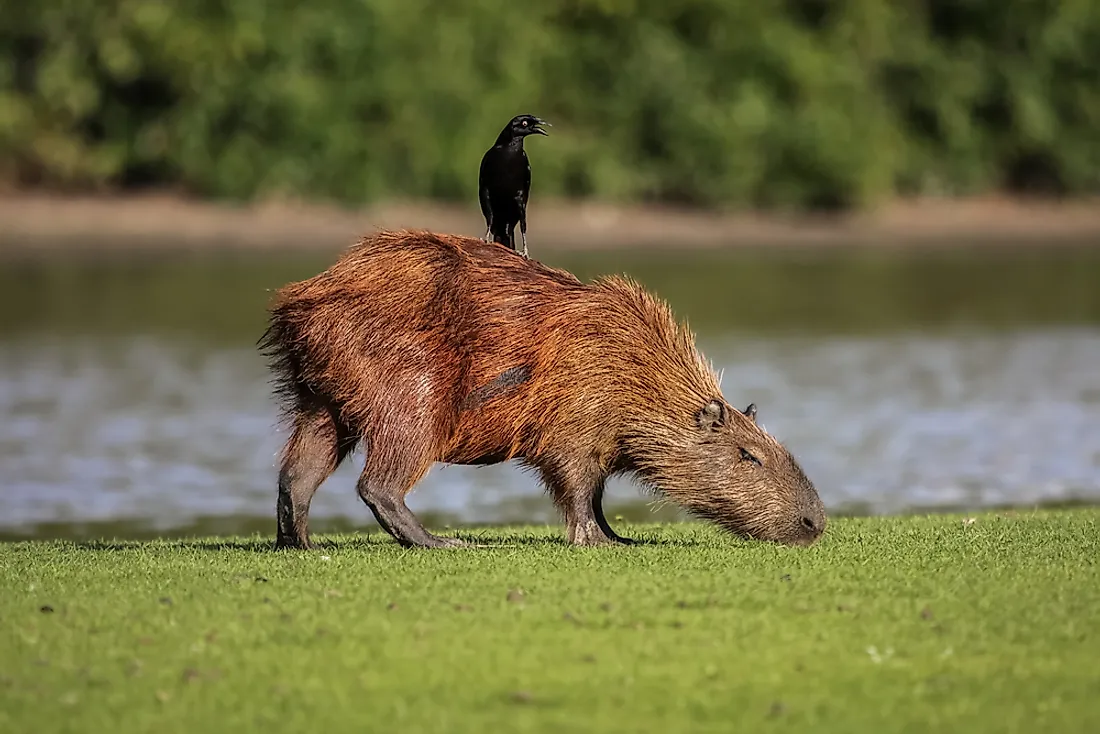
The “living chairs” and “nature’s ottoman” are other names used to refer to the capybaras. These names come from the fact that other animals love to sit on capybaras. Such animals include birds, other capybaras, and monkeys. Capybaras are a friendly animal allowing animals to play around it as much as they like. They never get annoyed by their mischief. Besides their being sociable, the capybaras also have a heavy, barrel-shaped body that enables it to carry other animals.
5. Capybaras Have Webbed Feet.
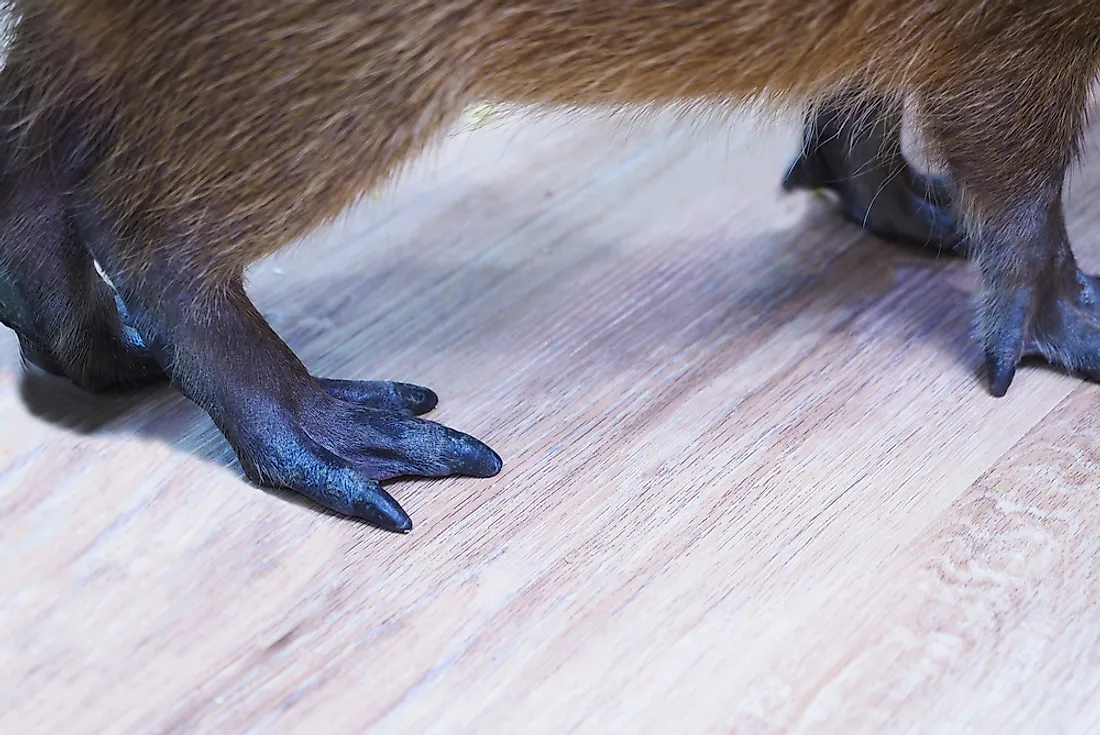
The feet of a capybara are slightly webbed. They also have vestigial tails. These features explain the semi-aquatic nature of the capybaras. The feet enable them to wade in the water and keep their balance. They also use their webbed feet to puddle in the soft, muddy ground.
4. It Is A Close Relative Of A Guinea Pig.
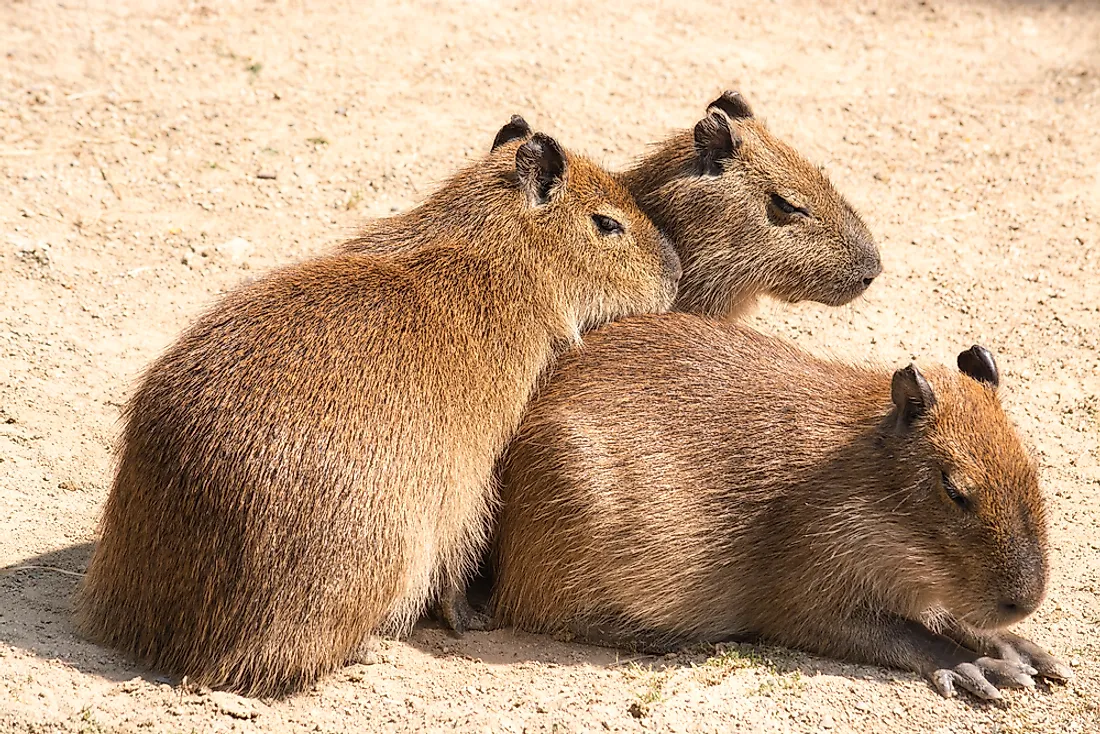
The close relation between the capybaras and the guinea pig is due to the many similarities between them. Both animals belong to the family called “Caviidae” in the order “Rodentia.” As such, both the guinea pig and capybara are rodents. Furthermore, both the guinea pig and capybara are active during the day as opposed to the night. The two rodents are an exception in the rodents’ family since most of them are nocturnal. Also, both animals are also excellent swimmers and hoppers. Whenever the guinea pigs are excited, they hop in the air. However, a difference between the two is that guinea pigs are not as agile as the capybaras. Regarding their size, however, the capybara is bigger than the guinea pig. In fact, it is the largest rodent in the whole world.
3. There Are Hot Springs In Japan That Are Home To Capybaras.
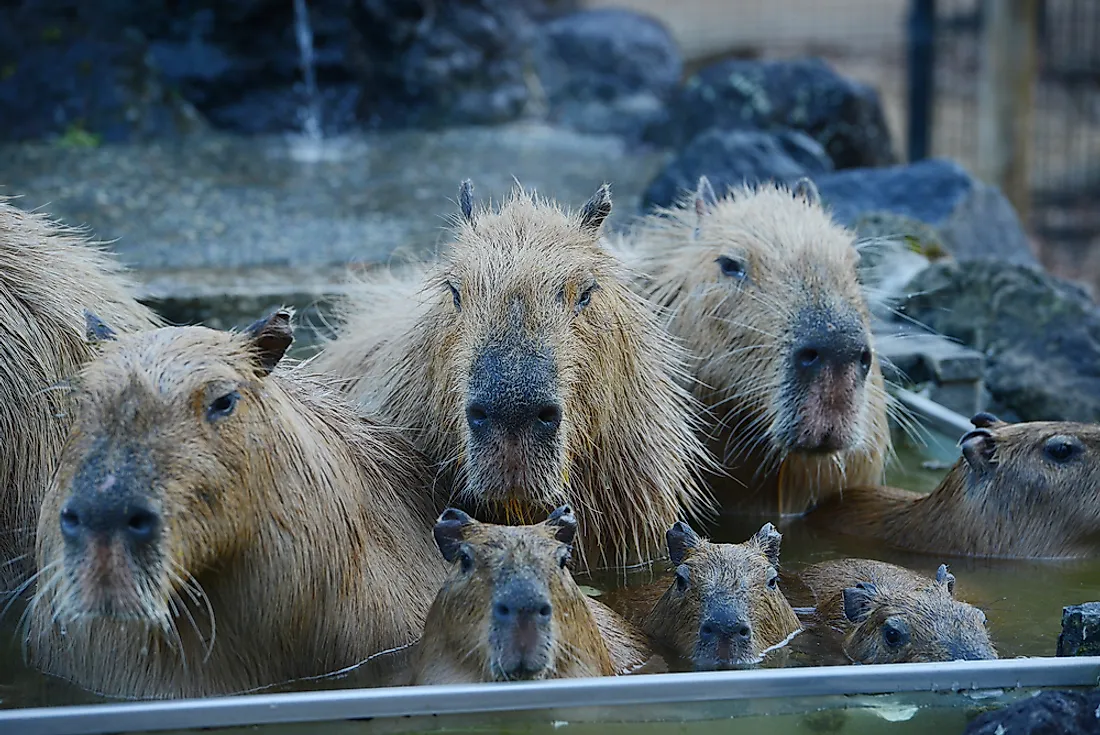
Capybaras and the hot springs of Japan go together very well. So well, in fact, that the country recently organized a capybara bathing competition. The competition had four animal parks participating. It aimed at determining the capybara that would stay in an onsen longer than the rest. However, this was not even the first ever held. Another capybara competition took place in 2016. At the time, the game related to a watermelon speed eating competition. The winner of the watermelon contest was a capybara from the Nagasaki Park.
2. Capybaras Have A Home That They Return To, No Matter How Far They Travel For Food.
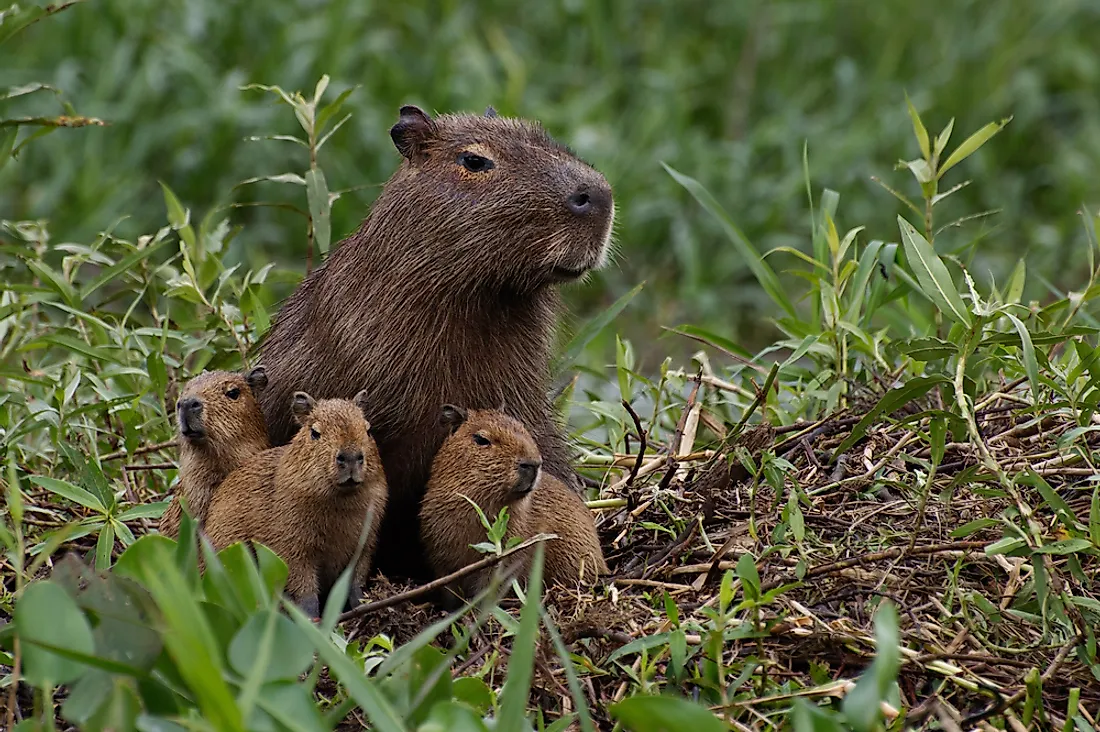
No matter how farther away from home they go in search of food, the capybaras always return home. They depend on their excellent sense of smell to trace their steps; a process called scent making. The capybaras have two types of scents: the morillo and the anal glands. For males, the anal glands have detachable hairs attached to them. The hairs have a coating of scent on them released when they come into contact with objects such as plants. Therefore, as the capybara moves around feeding on varieties of plants, it marks every plant along the way with its scent. So, to get back home the capybara just follows the smell of its path.
1. The Capybara Can Be Sun Burned.
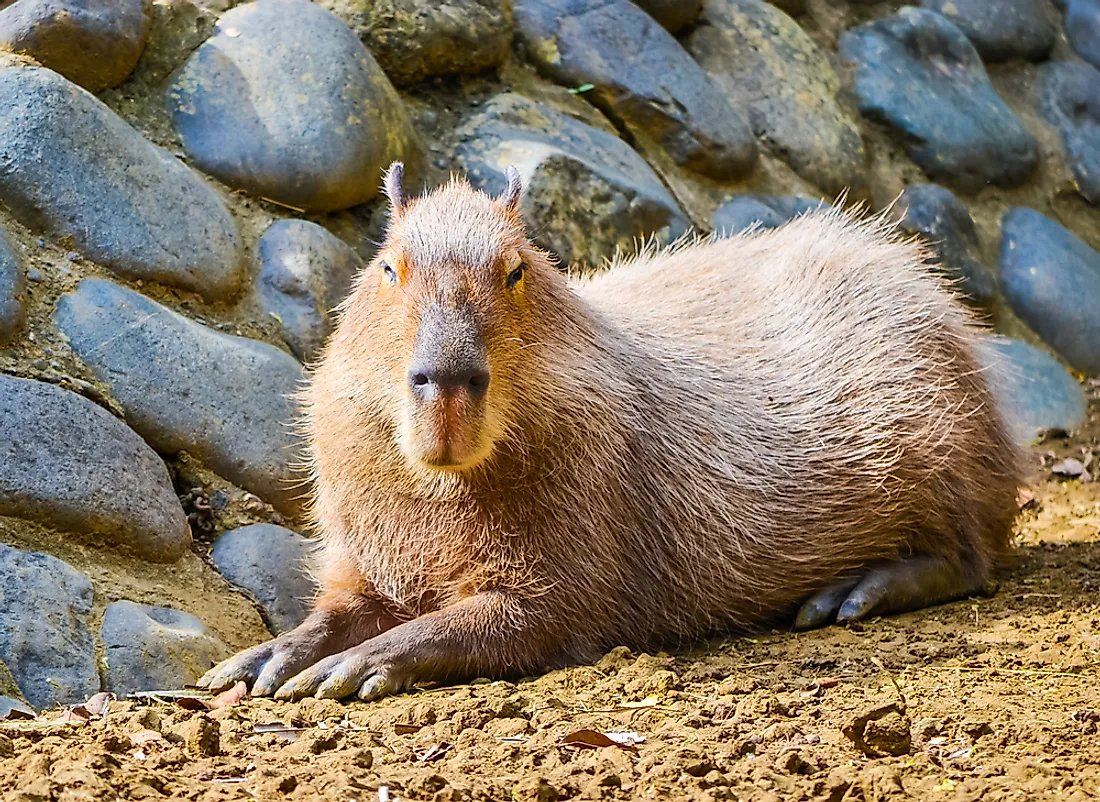
Capybara hair is not enough to cover their whole body which about 1.2 meters long and 0.6 meters wide. As a result, they are susceptible to sunburns. In order to protect their skin from the sun’s heat, they seek cover in water or mud. In addition, capybaras lack the down hair and ground hair. The down hair usually is responsible for thermal regulation. On the other hand, the guard hair protects the skin from external factors such as the sun’s ultraviolet rays. Therefore, the lack of these two hairs makes it difficult for the capybaras to avoid sunburns.
